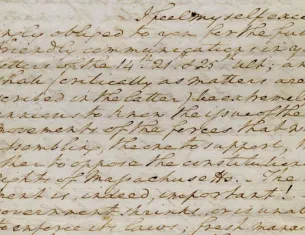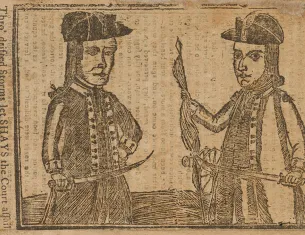Shays’ Rebellion, 1786

Daniel Shays and Job Shattuck, 1787, National Portrait Gallery, Smithsonian Institution
In the summer of 1786, Massachusetts farmers were faced with high taxes, a bad harvest, and an economic depression that left them cash-strapped. They rebelled against tax collectors who threatened to imprison them for debt. An armed mob led by Daniel Shays shut down the courts in Northampton, Massachusetts. So-called “Regulators” shut down other courts throughout the state. Eventually, Shays led an armed group to attack the Springfield Armory.
The rebellion, which lasted two years, was put down by state militia. The crisis demonstrated the need for a stronger central government capable of protecting democratic institutions, and ultimately influenced the decisions of the delegates to the Constitutional Convention.

![Detail from "A new and accurate map of the colony of Massachusets [i.e. Massachusetts] Bay, in North America, from a late survey," 1781 (Library of Congress)](/sites/default/files/styles/research_thumbnail/public/2023-10/springfield_loc.jpg.webp?itok=iPzx8hk3)
